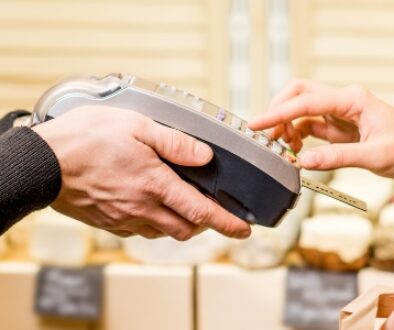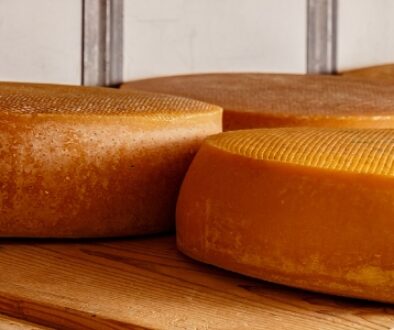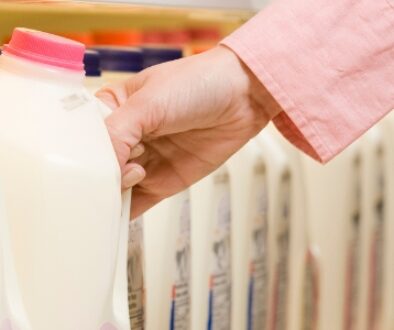Sourcing from the Rainbow: Natural Food Color Trends
Procter & Gamble refers to the first three to seven seconds after a shopper sees a product as the “First Moment of Truth” — or the instant a product’s appearance either works its magic, convincing the buyer to add it to their basket, or fails.
Color is a major part of this decision making, and not just because it’s visually stimulating. Color is also the consumer’s first indicator of flavor. According to a study by Emerald Insights, 90% of shoppers decide whether or not to buy a product solely based on color and perceived taste.
Finding the perfect shade to both entice the consumer and accurately represent the flavor of a food product is a make-or-break goal for manufacturers. Growing consumer distrust of artificial colors and preference for naturally sourced ingredients has made this undertaking even more challenging — especially because they don’t want color appearance to change.
According to a recent Sensient Food Colors case study, consumers demand vibrant, eye-catching color that “authentically illustrate nature’s brilliance,” and the race is on to find and process natural colors that look good enough to eat.
1. Orange you glad it’s natural?
Yellow and orange tones are a sought-after color category because they stimulate human appetites. Consumers have come to associate shades of gold with savory, indulgent flavors thanks to beloved food products like macaroni and cheese, buttered popcorn and slices of pre-packaged cheddar. More vibrant varieties of yellow and orange can also hint at citrus flavors in beverages, candy, ice cream and yogurt categories.
Companies have looked to ancient food coloring methods to help capture these warm, brilliant shades.
Many food brands now source their yellow and orange tones from African sorghum, Thai starfruit, carrots and pumpkins, though paprika and annatto extract may be the most popular (and successful) natural sources.
Kraft Heinz is just one company that’s swapped Yellow 5 and Yellow 6 for a combination of paprika, annatto extract and turmeric — replacing the artificial glow of Kraft Macaroni & Cheese powder with all-natural colorants in December 2015.
Following this success, and the success of other mac and cheese makers that have made the switch, it’s safe to say that these spices are the gold standard for yellow and orange natural colors in 2017.
2. Seeing red
Red triggers such strong positive emotions in consumers that many prefer the red “flavors” of food and beverage items when there is little to no flavor difference between colors for products like M&Ms.
Much of this attraction to red tones is evolutionary. According to a new study by the International Schools of Advanced Studies, the color red triggers hunger responses in humans because they associate its “color code” with higher levels of protein, calories and energy. The study also found this preference extends to processed and cooked food, where color is usually not an indicator of calorie levels.
This is likely the result of decades food advertising and exposure to artificial red food colors, and because red makes consumers think of more than just the prospect of a full belly — vibrant reds also conjure positive emotions and memories, which is why the color is so often used on food packaging.
Manufacturers have begun the search for sources that can deliver the brilliant shades of crimson, creamy pinks and deep reds to which consumers are accustomed.
Rubired grapes, ancient grain amaranth and South American shrub achiote are good sources of reds that can be manipulated to reveal a wide range of red tones and shades. The most popular, however, are lycopene — a powerful antioxidant and food colorant extracted from tomatoes — and reds extracted from insects.
Manufacturers should be cautious about the”ick” factor insect-based ingredients can trigger, however. In 2012, Starbucks faced backlash when consumers discovered it had replaced synthetic reds with insect extracts in its Strawberries & Creme Frappuccino and strawberry banana smoothies.
3. The color purple
Purple may not be a staple food color, but it’s still a very popular one. Like the color red, consumers perceive purple hues to be nutrient-rich foods, drawing from the colors of dark berries and red meat.
In the past, manufacturers have experimented with the color in unusual novelty applications aimed at children, such as Heinz’s short-lived EZ Squirt purple ketchup. The color is still found in primarily in children’s food products, especially in the morning foods category, but demand for purple has increased as segments of fruit-based smoothies, pressed-juices and protein shakes have grown.
Natural purples can be sourced from many of the same fruits and vegetables that produce red, though antioxidant-rich purple foods like elderberries, purple asparagus and purple sweet potatoes are predicted to become more popular color sources for food products in 2017.
Anthyocanin antioxidants, which are found in the stains left by berries, can also create colors in the violet-blue range. Sensient Food Colors predicts “rising interest in anthocyanin-based food color solutions of soft lavenders to brilliant blackberry shades.”
Purple sweet potatoes may be the color source with the most promise, however. The vegetables have excellent color stability, which is difficult to find in natural colors, and can produce tones ranging from raspberry red to grapelike purple. They also have a nice neutral flavor, while grapes often deliver a bitter taste.
Purple sweet potatoes’ high prices and hard texture make it difficult to extract pigment from them, however, which is why many companies continue to use insect extracts for purple tones, despite consumer concern. It will be interesting to see if processing technologies improve in 2017 so that this color can be harnessed.
4. Feeling blue (and green)
Blues and greens are probably the trickiest natural color category, from both an evolutionary and a processing standpoint.
Humans are wired to be suspicious of blue-colored foods because there aren’t many that occur in nature. Instead, the color blue triggers instinctual fear of mold, rotting meat and poisonous berries. Green can incite similar negative reactions if the wrong shade is used in processed food products.
This fear of blue has obviously been altered over time by the food industry’s artificial blues, but the color still doesn’t stimulate appetite like red, purple and orange colors do. Still, it’s a color that consumers have come to love in confection, cereal and novelty food spaces.
Unfortunately, because there are very few blue foods in nature, and even fewer that yield extractable blue colors (blueberry juice runs red and purple, not blue), food manufacturers face a daunting challenge. Spirulina, a type of algae, has been found to be a good source of blue and green, but the extraction process is arduous and there isn’t enough spirulina dye to service food manufacturers .
Because of this, many food companies have had to drop blue and green when they made the switch to natural colors, as was the case with General Mills’ Trix Cereal. Mars is still struggling to source a “true blue” from spirulina, which often yields blotchy colors and unpleasant flavors
Blue gardenia flowers, aged red wine, red cabbage and mushrooms are also being experimented with as potential blue sources. Leafy greens like spinach are being used to create desirable green tones.
Source: FoodDive.com




